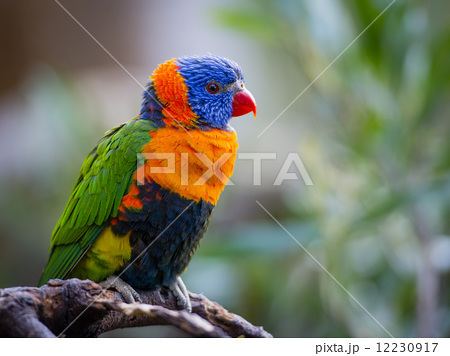Order Psittaciformes Rank Superfamily | Phylum Chordata Scientific name Psittacoidea | |
 | ||
Lifespan Budgerigar: 5 – 15 years, Hyacinth macaw: 50 years, Plain parakeet: 15 years Mass Budgerigar: 30 – 40 g, African grey parrot: 410 g Length Budgerigar: 18 cm, African grey parrot: 33 cm Clutch size Budgerigar: 4 – 6, Hyacinth macaw: 1 – 4, Cuban amazon: 2 – 4 Lower classifications Parrots, Budgerigar, Lovebird, African grey parrot, Lories and lorikeets | ||
Parrot parrots and the true parrots or cockatoos true parrots and new zealand parrots
The true parrots are about 350 species of colorful flighted (with a few notable exceptions) hook-billed, mostly herbivorous birds forming the superfamily Psittacoidea, one of the three superfamilies in the biological order Psittaciformes (parrots). True parrots are widespread, with species in Mexico, Central and South America, sub-Saharan Africa, India, Southeast Asia, Australia, and eastwards across the Pacific Ocean as far as Polynesia. The true parrots include many of the familiar parrots including macaws, conures, lorikeets, eclectus, amazon parrots, African gray parrot.
Contents
- Parrot parrots and the true parrots or cockatoos true parrots and new zealand parrots
- Overview
- Distribution and habitat
- Conservation status
- Taxonomy
- Species lists
- References
Overview
True parrots have a beak with a characteristic curved shape, the jaw with a mobility slightly higher than where it connects with the skull, and a generally upright position. They also have a large cranial capacity and are one of the most intelligent bird groups. They are good fliers and skillful climbers on branches of trees.
Some species can imitate the human voice and other sounds, although they do not have vocal cords — instead possessing a vocal organ at the base of the trachea known as the syrinx.
Like most parrots the Psittacidae are primarily seed eaters. There is some variation in the diet of individual species, with fruits, nuts, leaves and even insects and other animal prey being taken on occasion by some species. The lorikeets are predominantly nectar feeders; many other parrots will drink nectar as well. Most Psittacidae are cavity nesting birds which form monogamous pair bonds.
Distribution and habitat
The true parrots are distributed throughout the tropical and subtropical regions of the world, mostly in the Southern Hemisphere, covering many different habitats, from the humid tropical forests to deserts in Australia, India, Southeast Asia, sub-Saharan Africa, Central and South America, and two species, one extinct (the Carolina parakeet), formerly in the United States. However, the larger populations are native to Australasia, South America and Central America.
Conservation status
Many species are classified as threatened by the International Union for the Conservation of Nature(see IUCN Red List of birds) as well as national and non-governmental organizations. Trade in birds as well as other wild animals is governed by CITES (the Convention on International Trade in Endangered Species of Wild Fauna and Flora). Nearly all parrots are listed on CITES Appendices, trade limited or prohibited. Trapping wild parrots for the pet trade, as well as hunting, habitat loss and competition from invasive species, has diminished wild populations, with parrots being subjected to more exploitation than any other group of birds. Of the animals removed from the wild to be sold, very few survive during capture and transport, and those who do often die from poor conditions of captivity, poor diet and stress. Measures taken to conserve the habitats of some high-profile charismatic species have also protected many of the less charismatic species living in the same ecosystems.
18 species of parrot have gone extinct since 1500 (see List of extinct birds#Psittaciformes), nearly all in superfamily Psittacoidea.
Taxonomy
The parrot family Psittacidae (along with the family Cacatuidae comprising the order Psittaciformes) was traditionally considered to contain two subfamilies, the Psittacinae (typical parrots and allies) and the Loriinae (lories and lorikeets). However, today the tree of the parrot family has been reorganized under the superfamily Psittacoidea: family Psittacidae has been split into three families, tribes Strigopini and Nestorini split out and placed under superfamily Strigopoidea and a new monotypic superfamily Cacatuoidea created containing family Cacatuidae.
The following classification is based on the most recent proposal, which in turn is based on all the relevant recent findings.
Family Psittacidae, New World and African parrots
Family Psittrichasiidae, Indian Ocean island parrots
Family Psittaculidae, Asian and Australasian parrots, and lovebirds
